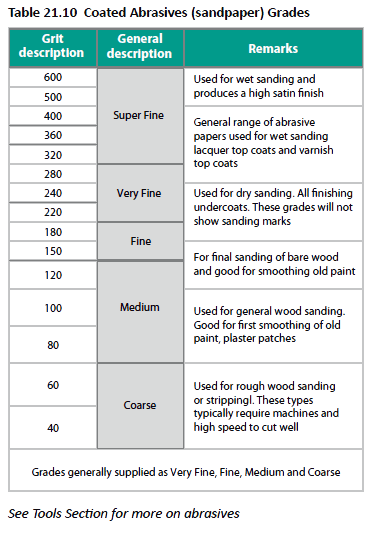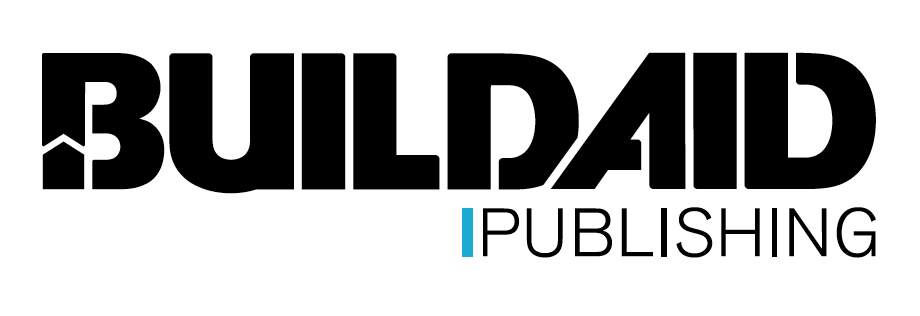
Chapter 21
FASTENERS, ADHESIVES AND ABRASIVES
Fasteners and Fixings
Fixing Types
Silicones, Sealants and Adhesives
Abrasives
Fasteners and Fixings
A fastener can be described as any device for joining units to each other. General purpose fasteners such as screws, bolts, nails, etc are usually of mild steel or galvanised steel, with other types like stainless steel, copper etc used when corrosion is considered.
General Fundamentals
The substrate and its quality are decisive for selection of the fixing, the construction material and anchor base. A differentiation is made between concrete, masonry and panel construction materials.
Concrete substrates
Concrete is a mixture of cement, stone, river sand (or other aggregates and admixtures) and water. Concrete is used for myriad applications, with the most common use being foundations, surface beds and slabs for buildings. The proportion of each material in the mix should suit the type of work being done according to strength requirements. Because of this, unfavourable conditions occur for anchoring fixings. Fixings have to therefore be carefully selected to suit the strength of the concrete and what bearing force is required from the fixing.
Masonry substrates
Masonry building units can be divided into two distinct categories: Clay and Concrete (or cement). Masonry can be defined as a structure built of individual units of precast concrete, burnt clay, or stone, or any type of brick, usually laid in mortar with all of these units having different compressive strengths (Mpa).
The compressive strength of the brick is usually higher than that of the mortar. Therefore, as much as possible, fixings should be anchored in the masonry unit. Generally, masonry units are differentiated into three groups:
- Solid bricks with dense structure are building materials that are very resistant to compressive loads without cavities or with only a low percentage of hole surfaces (up to max. 15% of gross volume of the brick). They are very well suited for anchoring fixings.
- Perforated bricks with a compact structure (perforated/ holes/cores in the bricks) these are mostly manufactured from the same compressive strength materials as the solid bricks but are provided with cavities (up to max 25% of the gross volume of the brick). If higher loads are introduced into these building materials, special fixings should be used, e.g. those which bridge or fill out the cavities.
- Perforated bricks with porous structure (low strength hollow blocks) have a large number of cavities and pores (contains cavities constituting in excess of 25% but not exceeding 60% of gross volume of the brick) and thus usually having low compressive strength (typically 3.5 Mpa). In this case, special care is needed in selection and installation of the correct fixing. Therefore, special fixings should be used for optimal fastening, e.g. fixings with long expansion zone and fixings that engage with the material or injection anchors with a positive fit effect especially with low strength hollow blocks, with cavities that can be filled with polystyrene.
Panel Substrates
Panel building materials are thin-walled construction materials that frequently have only low strength – e.g. plasterboard panels like “RhinoWall”; Fibreboard like “OSB” or “Timbawall” or chipboard, hard particle board, plywood, etc.
For optimum fastening, special fixings have to be selected, cavity fixings. These are fixings of plastic or metal that engage on the reverse side – fixings engaging with positive fit that can anchor directly on the reverse side of the panel in the cavity.
Drilling
The building material also makes the decision of how drilling is carried out; four methods are available:
- Rotary drilling: Drilling in rotary process without impact for perforated bricks and construction materials with low strength so that the hole does not become too great and/or the fillets in the perforated bricks don‘t break
- Impact drilling: Rotation and a high number of light impacts with the impact drilling machine, for solid building materials with dense structure.
- Hammer drilling: Rotation and a small number of impacts with high impact energy with the drilling hammer, also for solid building materials with dense structure
- Diamond or core drilling process: Mainly used for larger hole diameters or with greater reinforcement
See Tools Section for more information on drilling
Stress
Not only the construction material and the type of installation are important for selection of the fixing, but also the stress to which it is exposed: how great is the force? In what direction does it act? And where is it applied? Accordingly, forces are determined according to: magnitude, direction and point of application. The forces are specified in kN (kilo Newton – 1 kN = 100 kg), the bending moments in Nm (Newton meters).
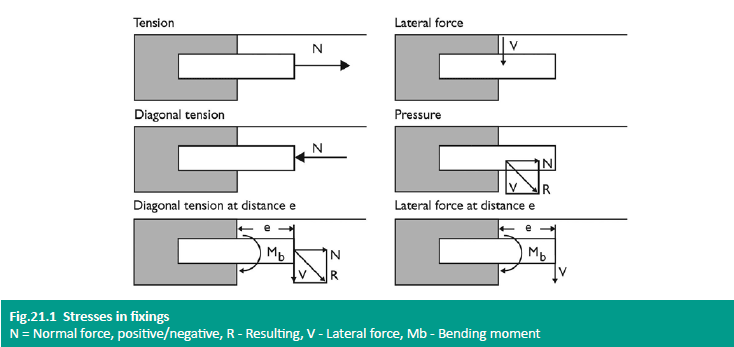
Fixing Types
The number of different types of fixings per category listed below is too vast to cover in this publication and we therefore only provide a short description of the type of fixing and a few examples of suitable applications.
Nails
Nails can be described as a straight metal fastener, usually with a head, hammered into position to secure one component to another. The most common nails are described below;
Round wire nails – a nail made by cutting and shaping a piece of round elliptical steel wire, wire nails are typically used in structural fixing e.g. Roof trusses, fixing brandering for ceilings etc. (Brass or zinc is used for escutcheon pins which are thin pin like wire nails with a small round head, usually 16mm in length).
Oval nails or Oval brad – a wire nail formed from oval wire, usually driven with its flat side parallel to the grain, to reduce splitting and typically used for fixing tongue and groove ceiling boards.
Panel pins – A thin round wire nail between 1 and 1.6mm thick. It has a small head, and in joinery may be nearly invisible when driven below the surface.
Steel Cut Nails– a tapered nail of constant thickness made by cutting (shearing) it from steel plate and typically used for fixing skirtings and cleats – flat side parallel to the grain.
Concrete fluted nails – a twisted nail made of hard steel that can be driven into ordinary bricks or into pre-drilled holes in harder materials.
Masonry nails – zinc – a round nail made of hard steel and zinc coated that can be driven into hard surfaces and typically used for exposed fixings.
Clout nails – a galvanised steel nail, with a large flat head, for fixing bitumen felt, metal roofing, plasterboard, etc. Clout nails are also available as serrated nails, improving nail holding properties.
Screws
Screws can be described as a fastener with a thread formed on its shank and tapered at the end for ease of starting to tighten the screw. The head is slotted so that it can be tightened or loosened with a screwdriver. Most screws used in building applications have a conical underside and flat (or raised) top so that they can be countersunk and are referred to as “CSK” screws. (The top ends up flush with the surface of the element being fixed). The most common screws are described below;
Wood screw – a steel screw with a tapered gimlet point, a straight shank, and a countersunk, raised or dome head, traditionally with a straight slot; also available in brass and brass plated.
Chipboard screw – a thick, twin thread screw for use in chipboard and other fibreboards can also be used for fixing other materials.
Drywall screw – a hard steel screw with a tip in the form of a drill bit, its thread is self- tapping and it usually has a crossed-slot head so that it can be driven home completely in one action with an electric drill. This type of screw can also be refered to as a posi-drive.
Self-tapping screw – a screw for use in sheet metal, with an upstanding thread, tapered at the point. It’s usually put into a
pre-drilled hole and cuts its own thread as it is driven.
Coach screw – a large gimlet-pointed screw for making fixings in wood, by turning the hexagon head with a spanner.
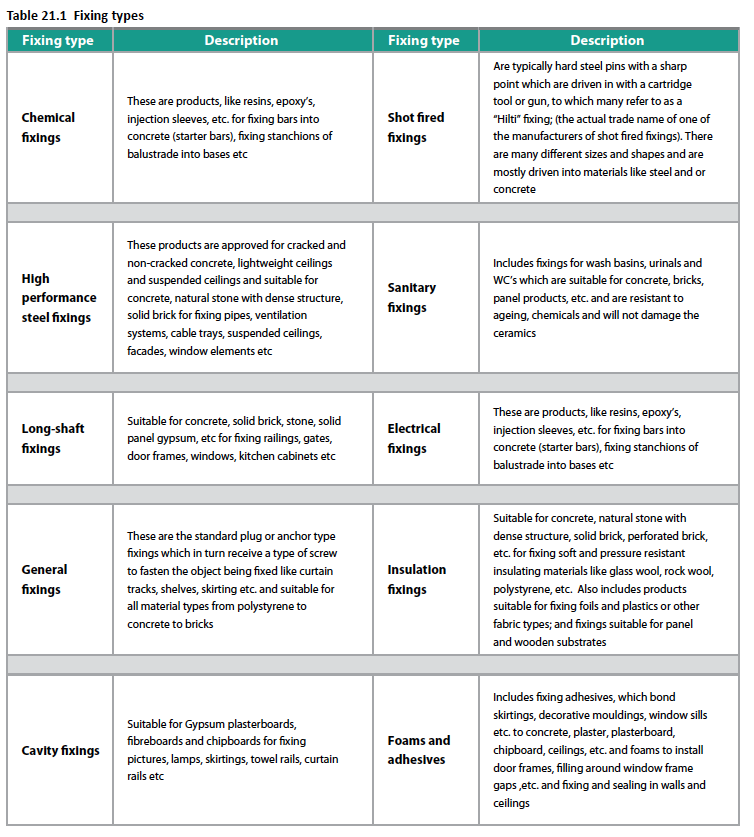
Self drilling Tek screw
Advancements made in technology mean that a screw is no longer just a screw, especially in the case of the new self-drilling Tek screw and bonded washer. This screw provides an easy and convenient alternative to using normal roof screws, top-speed roof screws and self tapping screws when you are fastening metal sheets to metal or wooden fixtures or structures, IBR or corrugated roof sheeting to roof trusses or beams and square tubing to metal or wood fixtures. The traditional way of fastening IBR sheeting or corrugated iron to metal tubing or wooden beams is to use roof nails, topspeed roofing screws or self-tapping screws.
This screw is made from high-speed steel and designed with a drill bit shaped point for drilling holes through metal, wood and asbestos without the need for pre-drilling or pilot holes.
The cut screw
The cut screw The cut screw differs from wood and chipboard screws in that it has a grooved drilling point as well as cutting edges on the thread that enable the screw to ‘bite’ and drill into the wood. This permits the screw to go in easier and faster, which means that the wood is less likely to expand and crack.
The grooved drilling point of the cut screw goes into all types of timber and board. As it drills its own pilot hole it cuts the fibres instead of pushing them aside – no cracking and splitting, without a pilot hole. Drilling a pilot hole first is more time consuming because you have to change the drill bit for a posi bit to drive away the screw. Chipboard screw points, unlike those of cut screws, are not very sharp and tend to ‘wander’ on the wood. This means that you need to punch the wood or board first to prevent wandering.
Bolts and nuts
Cup Head Square neck bolts and nuts are commonly used in roofing (site made trusses), and are referred to as “Roofing bolts” normally having a Shank size of 10mm (M10) and 90mm in length. Other sizes are available see table below. Hexagon nuts are normally used in all applications in construction and are available in the following sizes – M6 to M30 as per hexagon bolt table below.
Washers are available in metric sizes to suit the bolt size used with variations in overall diameter and thickness to suit the application.

Threaded Rod
Available in
- Galvanised steel: 1 metre and 3 meter lengths
- High tensile steel: 1 metre lengths
- Stainless steel: 1 metre lengths
- Can be cut in shorter lengths
- Sizes M6 – M30
Threaded rods are used in some roofing applications like thatching.
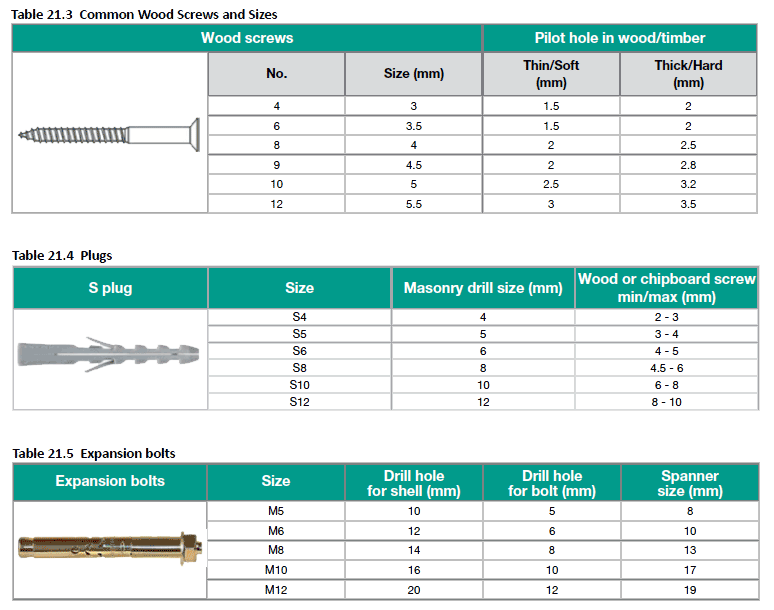
Silicones, sealants and adhesives
Silicone adhesives
They form very strong, very durable bonds with excellent resistance to high and low temperatures. Silicone adhesives dry flexible and are available in various colours like clear, black, white etc. They are recommended for bonding panels to other substrates and even wood or glass to vertical surfaces. They are also used extensively in fixing cornices to ceilings and walls including other mouldings where some movement is necessary to prevent cracking.
Sealants
Can be described as a sticky, viscous liquid that is put into a joint, where it stiffens, becoming rubbery and adhering to the sides of the substrate it was applied. Fully elastomeric sealants are usually two-part products which undergo complete curing no matter how thick they are and are typically used only in movement joints. One-part sealants which are usually “gun-grade’ and applied using a silicone gun or caulking gun. They include acrylic sealants, butyl sealants, polysulphides, polyurethane sealants and silicone sealants. Manufactures will provide technical advice, or recommend an applicator for larger projects.
Acrylic sealants
One-part sealants that set to a tough rubbery material by solvent release. They have good adhesion to most substrates without the need for a primer, but should not be used in wet areas and can be painted.
Butyl sealants
One-part sealants that set to a tough rubbery material by solvent release. They stick to most surfaces without a primer, but are not suited to severe conditions; are typically used in glazing applications.
Polysulphide sealants
High performance gun grade sealants with good adhesion to most surfaces, unless porous when a primer is needed. The two-part types have rapid and complete curing, remaining tough and flexible even in severe conditions (typically used in expansion and movement joints). The one-part type’s cure slowly, as atmospheric moisture activates the curing agent and process. They should not be applied in great thickness, as the outer cured layers do not let enough moisture through and hence slowing down the curing process when applied too thick.
Polyurethane sealants
Resilient synthetic resins with excellent stability to light whether clear or pigmented and are typically used in external applications and as multipurpose adhesive/sealants.
PU (Polyurethane) foams
PU foam can be described as expanding plastics with excellent insulation properties which when foamed in-situ are durable and can be shaped and sanded once dry. The raw materials expand and set several centimeters thick making it an ideal sealer around wooden door and window frames.
Silicone sealants
Versatile building sealants which cure to a tough silicone rubber that will withstand extreme temperatures, available in a number of different colours to suit the application from clear to black. They stick well to materials such as glass, metals, or ceramics, but a primer should be used on porous surfaces. Resistance to sunlight is good, but some types are not suitable for use on sanitary fittings, as they suffer biodegradation. In general they are not paintable and fall into one of the categories listed:
Joint design
All joints must be properly designed and dimensioned by the specifier and the contractor in accordance with relevant standards, because changes are not usually feasible after construction. The basis for calculation of the necessary joint width is the technical values of the joint sealant and the adjacent building materials, plus the exposure of the building, its method of construction and its dimensions. The joint width must be designed to suit the movement capability of the sealant. In general the joint width must be ≥ 10mm and ≥ 35mm with a width to depth ratio of 2 : 1, however for sealing of other elements like baths or sinks the joint width can be as little as 6mm -12mm and be 6mm deep.
In general, minimum joint width for connection joints and for perimeter joints like around windows must be 10mm. (Joints ≥ 10mm are for crack control and therefore non movement joints).
Adhesives
Careful selection of adhesives is vital to success; there are many different types, each suited to a particular job and to a variety of materials and specific conditions. We have only highlighted adhesives that are used in carpentry and joinery in this section. Typically adhesives come in tins, squeeze bottles, gun-grade cartridges, or with plunger units for two-part adhesives, which are stronger but have a short working life.
Adhesives
Careful selection of adhesives is vital to success; there are many different types, each suited to a particular job and to a variety of materials and specific conditions. We have only highlighted adhesives that are used in carpentry and joinery in this section. Typically adhesives come in tins, squeeze bottles, gun-grade cartridges, or with plunger units for two-part adhesives, which are stronger but have a short working life.
Wood adhesives
Most wood glues are a fast-curing emulsion adhesive (solvent free), usually white in colour and typically non-staining and can be used on most kinds of woods for assembling and repair jobs. In most instances the joint or surface areas being glued require clamping.
White glue (polyvinyl acetate, or PVA)
PVA glue is a white liquid, usually sold in plastic bottles. It is recommended for use on absorbent materials such as wood, paper, cloth, porous pottery, and nonstructural wood-to-wood bonds. It is not water resistant. Clamping is required for 30 minutes to 1 hour to set the glue; curing time is 18 to 24 hours. PVA glue dries clear.
Yellow glue (aliphatic resin or carpenters glue)
Aliphatic resin glue is a yellow liquid, usually sold in plastic squeeze bottles and often labelled as carpenters’ glue. Yellow glue is very similar to white glue but forms a slightly stronger bond. It is also slightly more water resistant than white glue. Clamping is required for about 30 minutes until the glue sets; curing time is 12 to 18 hours. Yellow glue dries clear but does not accept wood stains.
Quick setting paper and wood glue
Versatile, high quality wood glue designed mainly for use on hardwoods (e.g. Imbuia and Oak) where quality of the finished product is the major consideration. Additional advantages include the fact that it’s non-toxic and dries to a clear glue line. It will also produce excellent results on various softwoods like pine and composition boards like chipboard as well as bonding paper, leather, felt, stone and a variety of other substrates.
Cascamite® – waterproof wood glue
High quality waterproof wood glue designed primarily for boat building and general joinery.
Timber and woodblock adhesive
This adhesive has been specially formulated for the installation of wood mosaics to concrete. It can however also be used for timber to timber bonding.
Contact adhesives
Adhesives which stick immediately the two surfaces are brought together, usually latex cement¹ in a fast-drying solvent. They are applied ‘two-way dry’ that is spread on both surfaces and allowed to dry briefly before the parts are brought together and is recommended for bonding laminates and veneers. It can also be used on paper, leather, cloth, rubber, metal, glass, and some plastics because it remains flexible when it dries. Firm but brief pressure may be required, but no clamping is required and no repositioning is possible once contact has been made. It is not recommended for repairs where strength is necessary.
Latex cement is a contact adhesive used to stick down floor coverings, like carpets, linoleum and wood-block flooring; it gives off ammonia.
Other types
Solvent free contact adhesive
A water based contact adhesive, perfect for bonding the following materials in any combination: rubber, leather, metal, most plastics, cork, laminates, textiles, floor coverings, wood painted surfaces and many more, and has twice the spread rate of conventional contact adhesives.
Spray Contact adhesive
A versatile spray adhesive which bonds polyester foams, paper, photographs, posters, reproductions, metal foil sheets, cardboard, felt cork, etc. to themselves as a well as wood, fibreboard, chipboard, glass, concrete, metal, etc.
Resins
Synthetic resins are a group of polymers used in highperformance
plastics, adhesives, water proofers, binders and paints, like acrylic, alkyd, epoxy, polyester, and silicone, as well as melamine; phenol, resorcinol and urea-formaldehyde resins (UF).
Acrylic resin (polymethyl methacrylate) is the synthetic resin in acrylic paints, sealants, adhesives and sheets; it has a poor resistance to alkalis.
Polymers are synthetic organic materials including plastics, resins, rubbers and sealants. They have large molecules combining many hundreds of smaller molecules of the monomer. Polymers are a large family, with overlapping properties.
Note: It would be impossible to cover all the variables in this section and it is recommended that the reader contact the manufacturer for further details, because conditions and methods of use of these types of products are beyond what is covered in this publication; the information is intended as a guide only. The relevant technical data sheets provided by the manufacturers should be consulted to determine total requirements.
Some resins are poisonous; in general they should not be allowed on the skin or in the eyes, nose and mouth.
Plastic resin glue – urea formaldehyde (UF)
Plastic resin glue is recommended for laminating layers of wood and for gluing structural joints. It is water resistant but not waterproof and isn’t recommended for use on outdoor furniture. This glue is resistant to paint and lacquer thinners. Clamping is required for up to 8 hours; curing time is 18 to 24 hours.
Resorcinol glue
This glue is waterproof and forms strong and durable bonds. It is recommended for use on outdoor furniture, kitchen counters, structural bonding, boats, and sporting gear. It can also be used on concrete, cork, fabrics, leather, and some plastics. Resorcinol glue has excellent resistance to temperature extremes, chemicals, and fungus. Clamping is required; curing time is 8 to 24 hours, depending on humidity and temperature. Resins are not priced as they are typically used in the manufacturing process of laminates.
Abrasives
Abrasives can be described as rough hard materials (grits) in various forms such as sandpaper, grinding wheels, or grinding discs; used to smooth or clean surfaces. From hard to soft they include diamond, corundum (emery¹), carborundum, powdered glass and silica sand. The hardest abrasives cause others to wear the most while lasting longer themselves. Coarse abrasives remove the most material, fine abrasives give the smoothest surface, ¹ Emery (aluminium oxide) – a very hard black material, mostly used as a granular abrasive; commonly referred to as emery paper.
You will find that ordinary words, in the abrasive field, are much less precise than you might expect. To begin with, sandpaper rarely has any real sand and the backing isn’t always paper; in fact manufacturers prefer to call their products ‘coated abrasives’. Sandpaper is a tough paper coated with powdered abrasive, such as emery, garnet, or glass. Different grit size or grades of coarseness are used for flatting-down, rubbing down, wet rubbing, polishing etc. Whatever the grit material, the grain size is important, as that’s what controls the depth of the scratches that remove material from the substrate.
Identifying grit size from a variety of terms can be confusing: in selling to the general public, the coated abrasive industry tends to rely on the terms fine, medium, and course instead of being specific, whereas many specifications refer to specific grit sizes. In the table below, we show specific grit sizes, grouped into fine, medium, and course grades. Slightly different grit sizes grouped within a grade range will produce similar results; it is only when you are trying to create a very smooth surface in the super fine category that the grit size is critically important.
The backing is nearly as important as the grit. The backing has to hold together if your paper is to have any durability. Generally, today’s known brand sandpapers do a good job. Nevertheless, a strong backing is especially important for machine sanding, whether you’re using a disc on a portable drill, an orbital sander or a belt sander. Some sandpapers come on cloth backings. Sheet sand paper is usually available in sheets, (280 x 230mm), or in rolls of varying widths and lengths.
